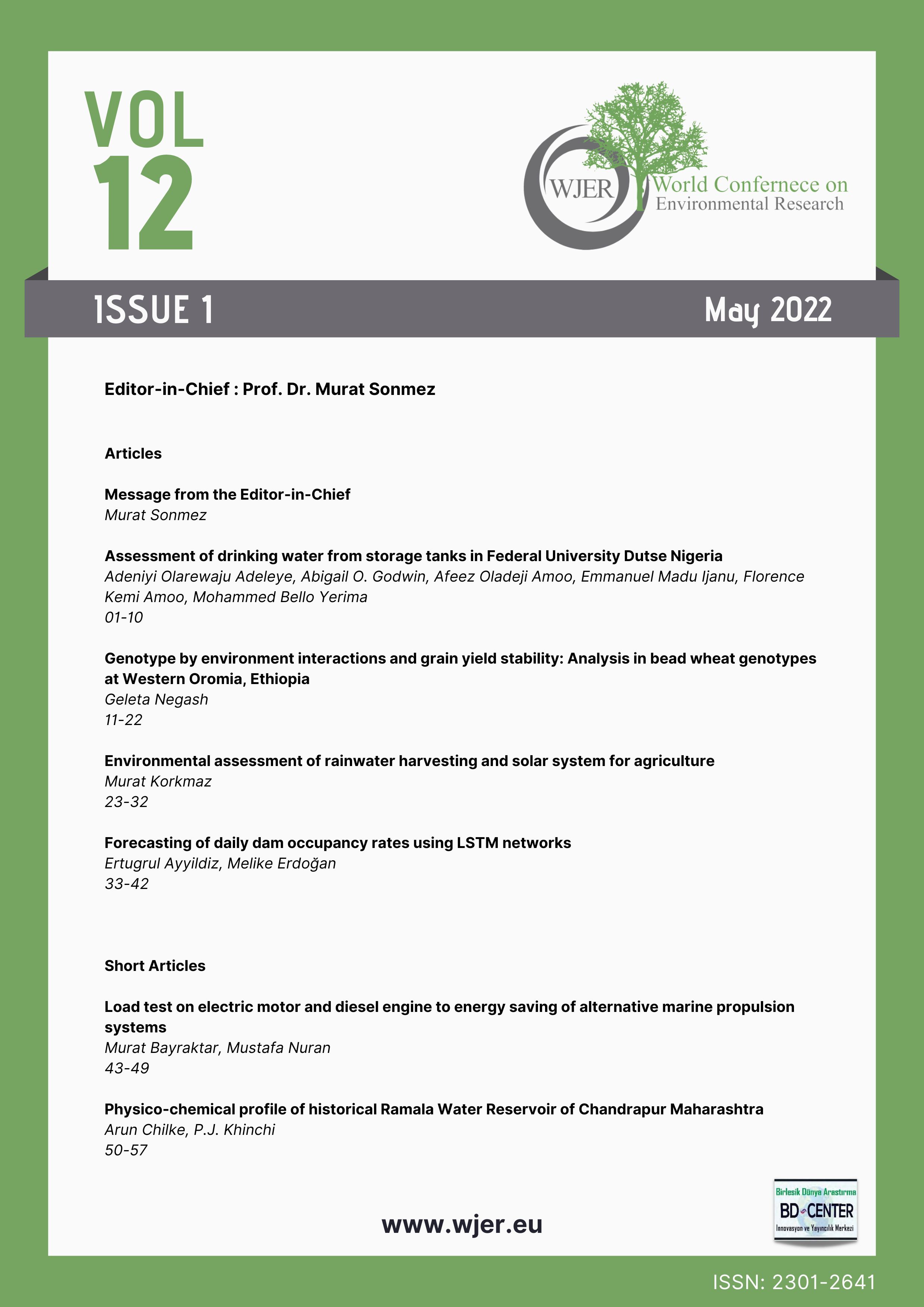Genotype by environment interactions and grain yield stability: Analysis in bead wheat genotypes at Western Oromia, Ethiopia
Main Article Content
Abstract
Bread wheat is the most important cereal crop occupying a prominent position among major food crops in the world in terms of acreage and production and is an important cereal crop that receives the most attention from specialists in plant breeding and production worldwide. The interaction between genotypes/varieties and environment is important for effective selection of the variety/ies. This study aimed to observe the genotypic stability of fifteen bread wheat genotypes across four locations for three years and to select genotypes combing a high level of grain yield and yield stability. The combined ANOVA analysis for grain yield of fifteen bread wheat genotypes at 10 environments showed that bread wheat grain yield was significantly affected by environment, which explained a high percentage of the total treatment variation, whereas the G and GEI were significant and accounted for a lower percentage. The additive main effects and multiplicative interactions (AMMI) analysis indicated that two principal component analyses (PCA) were significant.
Keywords: AMMI; Bread wheat; Genotype; PCA; stability.
Downloads
Article Details

This work is licensed under a Creative Commons Attribution 4.0 International License.
World Journal of Environmental Research is an Open Access Journal. All articles can be downloaded free of charge. Articles published in the Journal are Open-Access articles distributed under Attribution 4.0 International (CC BY 4.0)
